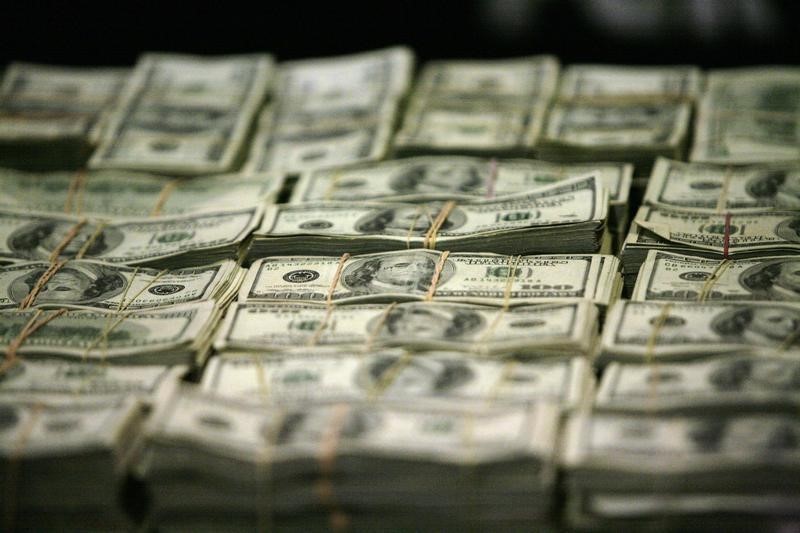Investing.com - The dollar remained broadly lower against the other major currencies on Wednesday, after the release of disappointing U.S. retail sales and producer price inflation data dampened optimism over the strength of the economy.
The dollar extended losses against the euro, with EUR/USD up 0.46% at 1.1432.
The U.S. Commerce Department reported on Wednesday that retail sales increased by 0.1% last month, missing expectations for a gain of 0.2%.
Core retail sales, which exclude automobile sales, declined by 0.3% in September, worse than forecasts for a fall of 0.1%.
Data also showed that producer price inflation in the U.S. fell for the first time in five months in September.
Producer prices declined by 0.5% last month, worse than forecasts for a drop of 0.2%, while core PPI eased down by 0.3%, disappointing forecasts for a gain of 0.1%
In the euro zone, data on Thursday showed that industrial production fell 0.5% in August after an upwardly revised 0.8% increase in July.
The dollar was also lower against the yen, with USD/JPY down 0.35% to 119.31.
The safe-haven yen remained supported after data on Wednesday showed that the annual rate of inflation in China slowed to 1.6% in September, from 2.0% in August, compared to forecasts of 1.8%.
Producer prices were also lower, adding to concerns over deflationary pressures in the world’s second-largest economy. The report came one day after data showing that Chinese imports tumbled 20% last month.
Elsewhere, the dollar pushed lower against the pound and the Swiss franc, with GBP/USD rallying 1.14% to 1.5422 and with USD/CHF retreating 0.48% to 0.9532.
The U.K. Office for National Statistics earlier said that the unemployment rate ticked down to a seven-year low of 5.4% in the three months to August from 5.5% in the preceding three-month period. It was the lowest unemployment rate since the second quarter of 2008.
The number of people claiming unemployment benefits rose by 4,600, bringing the total to 796,000.
Average earnings, excluding bonuses, rose at an annual rate of 2.8% in the three months to August, while pay including bonuses rose by 3.0%.
The Australian and New Zealand dollars were stronger, with AUD/USD up 0.17% at 0.7256 and with NZD/USD jumping 1.81% to 0.6763.
Meanwhile, USD/CAD slipped 0.25% to trade at 1.3004.
The U.S. dollar index, which measures the greenback’s strength against a trade-weighted basket of six major currencies, was down 0.47% at 94.36, the lowest level since September 18.
